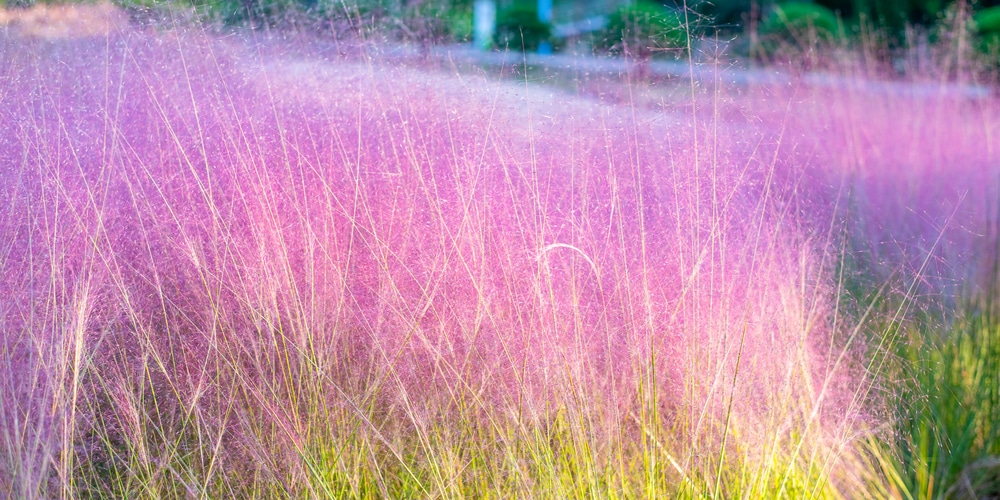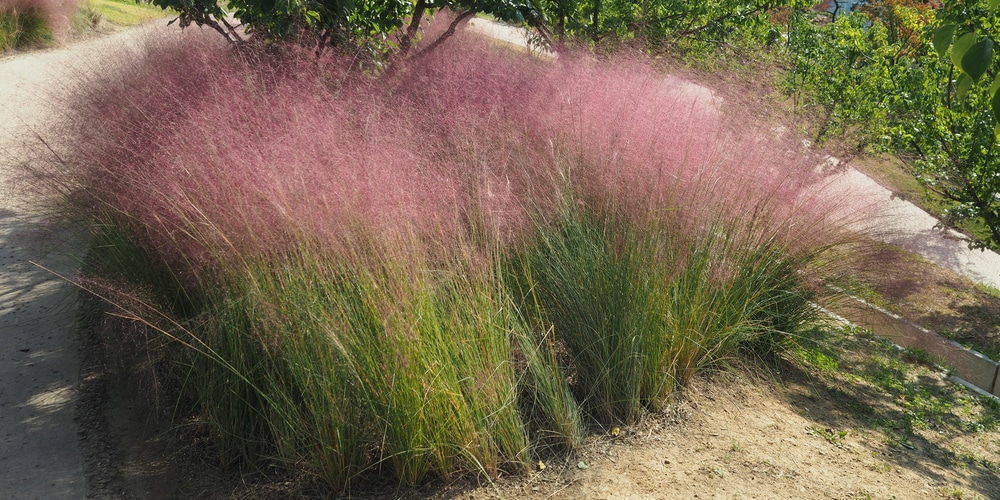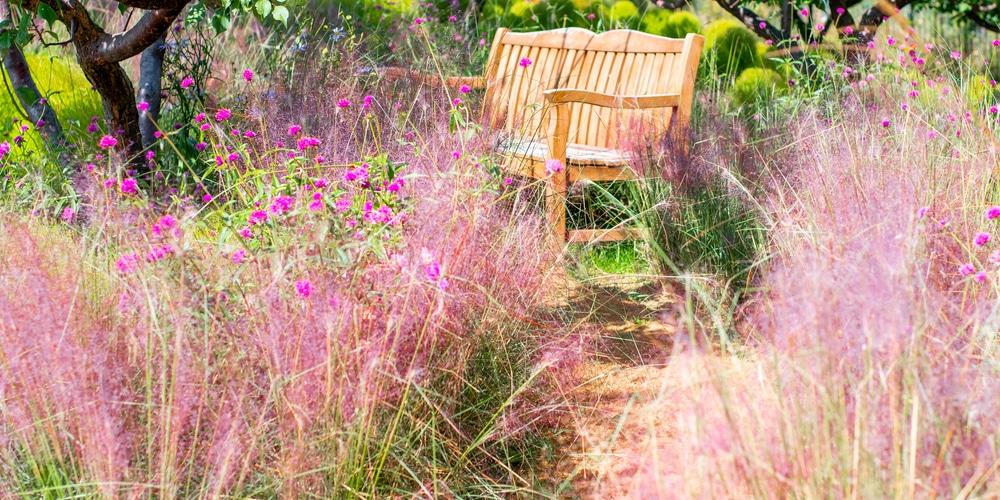Muhly Grass or Muhlenbergia capillaris has long been a popular ornamental grass for landscaping application in many areas of the United States. Its feathery flower plumes and delicate texture give it an almost ethereal appearance.
This variety of grass has a unique form and pink grass heads, making it look graceful and adding interest to your garden or landscape plan. This article will go over some basic care guidelines and information on how to grow Muhly Grass.
What is Muhlenbergia Capillaris?
Muhlenbergia capillaris is a tender warm-season perennial grass with an upright bushy form, growing three feet high and wide. This variety of ornamental grass is part of the Poaceae family and is commonly referred to as ‘muhly.’ Other common names include pink muhly grass, regal mist, or cotton candy grass. Some people simply refer to the plant as pink hair.
The plumes are composed of fine silky hairs, which give the seed head its unique filigree appearance. Flowering stems emerge in late spring to early summer, blooming into feathery flower plumes that remain on the plant through fall.
The Muhlenbergia capillaris is a beautiful perennial native to the United States and is found growing in yards throughout the country.
How to Care for a Muhlenbergia Capillaris?
Muhlenbergia capillaris is quite hardy and as a result is easy to look after. It thrives in full sun to partial shade, with the flower stalks reaching heights of 4 to 6 feet when mature. Here are some tips to help you grow a healthy pink Muhly plant:
Sunlight Requirements
Muhlenbergia capillaris prefers full sunlight but also tolerates partial shade. It can be grown in a sunny flower border or in a container on a patio. These plants are versatile and are pretty heat resistant. They won’t be burnt by the sun but need enough light and shouldn’t be placed in very shaded locations.
Watering frequency
Muhly Grass is a drought-tolerant grass and will not require additional water if you live in an area that gets enough rainfall. It has high heat and sun tolerance, requiring little irrigation once established. However, it’s best to water this plant regularly for the first year. It does require moist soil conditions to sustain the plant and flowers.
Drought stress or under-watering may impede the development of future flower buds. Be careful not to overwater this plant, or it may suffer from root rot. Most homeowners find that their grass needs to be watered once a week during the growing season.
Soil
Muhlenbergia capillaris prefer well-draining soil that provides the plant with regular moisture during dry weather periods. The ideal pH is 6.0 but can tolerate a range from 5.0 to 7.5. It can cope with poor quality, sandy soils but doesn’t do so well in clay-like soils that can easily become waterlogged.
Fertilizer
Apply fertilizer at planting time according to the manufacturer’s instructions. Annual fertilizer applications are not usually necessary, except in poor-quality soils.
Temperature
Muhlenbergia capillaris is tolerant of most temperature conditions and handles both cold and heat well. However, this grass is extremely sensitive to cold temperatures, with exposure to frost causing severe damage or death. It’s important that you keep your ornamental grass protected from frost and freezing conditions, especially temperatures below 32 degrees F.
This means that if growing muhly grass in colder areas with a definite winter, you’ll need to bring the plant inside during winter months or protect it with mulch.
Prunning
Pruning isn’t necessary for the muhly grass. Pruning often exposes weak areas, which can lead to winter damage or death of your Muhlenbergia capillaris. Some people like to remove the seed heads in the late fall, while others prefer to leave them for birds to eat.
Potential pest and disease problems
Muhlenbergia capillaris is susceptible to powdery mildew in humid conditions with low air circulation but does not suffer from many serious insect or disease problems. It can be affected by aphids which can be killed using neem oil or an insecticidal spray.
Yellowing of leaves may indicate that your soil doesn’t have enough nitrogen or that it is waterlogged. If your plant is growing in a container, make sure the drainage holes are open rather than filled with gravel to prevent root rot.
Fungal infections such as rust and tar spots can also affect Muhlenbergia capillaris, especially in warm, humid environments. To avoid these problems, ensure air can flow around your plant’s leaves by spacing the plants far enough apart.
Propagation
Muhlenbergia capillaris is primarily propagated by division in the early spring. Only divide large, mature plants that are at least three years old. It is also relatively easy to propagate this plant using seed. You can collect the seed heads in the fall and keep them until the early spring when they can be planted in a sunny spot.
How do I plant muhly grass?
Planting is best done during the spring months. Prepare a hole by removing any weeds/grass from the planting area and mix in some composted soil with the existing native soil to improve drainage. Be sure that there are no areas that remain waterlogged or submerged after watering. Muhly grass prefers well-draining soils, so it’s important that the roots are never exposed to standing water. Run your finger along the outside edge of the planted area to create a small trench to direct any runoff – this will prevent the grass from rotting.
Once your hole is prepared, add some composted soil and work it into the soil in your planting area, then carefully remove your muhly grass from its container and position it upright in the center of the hole.
Fill in around the plant with more native soil, ensuring there isn’t an air pocket left and that all parts of the crown are covered. Water thoroughly after planting and mulch lightly to keep weeds away and help keep roots cool during hot weather periods.
Conclusion
Growing pink muhly grass is extremely easy, but it requires enough moisture and tolerates full sun to partial shade. As an ornamental plant, this grass works well as a background in flower beds and other landscaping projects. It’s commonly used in low-maintenance gardens where little care is required.


